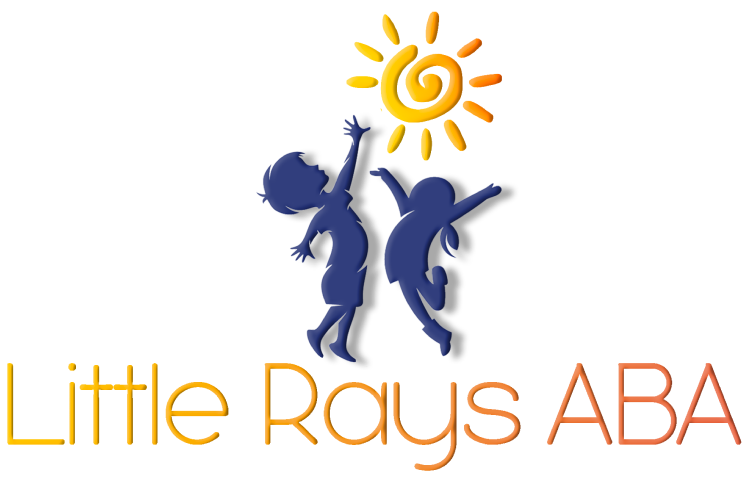Understanding Autism Learning Styles
Importance of Visual Learning
Visual learning is a crucial strategy for individuals with autism spectrum disorder (ASD). Many individuals with autism are visual learners, meaning they process and retain information more effectively when it is presented visually. This preference for visual learning can be attributed to the way their brains process information, often finding it easier to understand and remember images rather than spoken or written words.
Various learning styles for autism, specifically visual learning, can significantly enhance communication, comprehension, and overall learning experiences. By incorporating visual aids, educators and caregivers can create a more inclusive and supportive learning environment for individuals with autism.
Benefits of Visual Aids
Visual aids offer numerous benefits for individuals with autism, helping to address various challenges they may face in learning and daily life. Here are some key advantages:
- Improved Behavior and Reduced Anxiety: Visual schedules can improve a child’s behavior by providing a sense of calmness and easing anxiety associated with an unknown, changing daily schedule. They offer predictability, which can be comforting and help children feel more in control.
- Enhanced Communication Skills: Visual aids support language development by allowing children to look at visual representations while instructions and concepts are spoken. This dual input can reinforce understanding and retention of new vocabulary.
- Better Attention and Focus: Visual aids help students with autism improve executive functioning skills by focusing their attention and filtering out distractions in their environment. This can aid in tasks like discriminating between important and unimportant information.
- Support for Central Coherence Deficits: Visual strategies provide essential support by offering added context of surroundings and expectations. This can help individuals with autism understand the bigger picture and how different pieces of information fit together.
- Management of Behavior and Routines: Visual supports can assist students with ASD in managing behavior and daily routines, especially since they may have difficulties processing and understanding language. These strategies are supported by research and are considered established treatments in the field by the National Autism Center.
- Encouragement of Independence: Visual aids can promote independence by providing clear, step-by-step instructions for tasks and routines. This can empower individuals with autism to complete tasks on their own, boosting their confidence and self-reliance.
| Benefit | Description |
|---|---|
| Improved Behavior | Provides predictability and reduces anxiety |
| Enhanced Communication | Supports language development with visual representations |
| Better Attention | Focuses attention and filters out distractions |
| Support for Central Coherence | Offers context and helps understand the bigger picture |
| Behavior Management | Assists in managing behavior and routines |
| Encouragement of Independence | Promotes self-reliance with clear instructions |
For more information on autism learning styles, visit our article on autism learning styles. Additionally, explore other learning techniques such as auditory learning techniques for autism and kinesthetic learning activities for autism to find the best strategies for supporting individuals with autism.
Implementing Visual Strategies
Visual learning strategies can significantly enhance the educational experience for students with autism. By incorporating visual schedules, pairing vocabulary with visuals, and using visual supports for transitions, educators and caregivers can create a more structured and supportive learning environment.
Visual Schedules for Behavior Improvement
Visual schedules are an effective tool for improving behavior in children with autism. These schedules provide a sense of calmness and ease anxiety associated with an unknown, changing daily schedule. They can also enhance communication skills by allowing children to look at visual representations while instructions and concepts are spoken, supporting their language development.
| Benefit | Description |
|---|---|
| Reduces Anxiety | Provides predictability and structure |
| Enhances Communication | Supports language development through visual representation |
| Improves Attention | Customizable with motivating pictures to enhance focus |
Pairing Vocabulary with Visuals
Pairing vocabulary with visuals is another effective strategy for supporting students with autism. Visual aids help students improve executive functioning skills by focusing their attention and filtering out distractions in their environment. This aids in tasks like discriminating between important and unimportant information.
| Benefit | Description |
|---|---|
| Focuses Attention | Helps filter out distractions |
| Enhances Understanding | Provides clear visual representation of vocabulary |
| Supports Memory | Reinforces learning through visual association |
Visual Supports for Transitions
Using visual supports during transitions in the school environment helps students with autism focus on where they are going and differentiate between different visual information. This aids in maintaining attention and reducing confusion.
| Benefit | Description |
|---|---|
| Maintains Attention | Helps students focus on the next activity |
| Reduces Confusion | Provides clear visual cues for transitions |
| Supports Independence | Aids in independent transitions and task completion |
Providing visual steps for completing tasks, such as using a task tree or task analysis, helps students prepare for different subjects by breaking down tasks into manageable steps with clear expectations. For more practical tips, check out our article on technology-assisted learning for autism.
By implementing these visual strategies, educators and caregivers can create a more supportive and effective learning environment for students with autism.
Enhancing Executive Functioning
Executive functioning skills are crucial for individuals with autism as they help in managing time, focusing attention, and completing tasks. Visual learning strategies can significantly enhance these skills by providing clear, structured, and predictable information.
Focusing Attention with Visual Aids
Visual aids are effective tools for helping students with autism improve their executive functioning skills. They assist in focusing attention and filtering out distractions in their environment. This is particularly important for tasks that require discriminating between important and unimportant information.
Visual aids can include:
- Visual Schedules: These provide a clear outline of the day's activities, helping students understand what to expect and when.
- Visual Timers: These help students manage their time effectively by providing a visual representation of the time remaining for a task.
- Visual Cues: These can be symbols or pictures that highlight key information, aiding in comprehension and memory recall.
Task Analysis for Task Completion
Task analysis involves breaking down tasks into smaller, manageable steps. This method is particularly beneficial for students with autism as it provides clear expectations and helps in independent task completion.
Steps for implementing task analysis:
- Identify the Task: Choose a task that the student needs to complete.
- Break Down the Task: Divide the task into smaller, sequential steps.
- Create Visual Steps: Use pictures or symbols to represent each step.
- Teach the Steps: Guide the student through each step, using the visual aids as a reference.
| Task | Step 1 | Step 2 | Step 3 | Step 4 |
|---|---|---|---|---|
| Handwashing | Turn on water | Wet hands | Apply soap | Rinse hands |
Using visual steps for tasks helps students prepare for different subjects and activities, aiding in smooth transitions and task completion.
By incorporating these visual learning strategies, educators and caregivers can provide essential support to students with autism, helping them enhance their executive functioning skills and achieve greater independence in their learning journey.
Addressing Central Coherence Deficits
Central coherence deficits in individuals with autism can make it challenging for them to see the big picture and understand context. Visual learning strategies are effective in addressing these deficits by providing essential support and context.
Providing Context with Visual Strategies
Visual strategies, such as visual schedules and visual aids, are effective in providing context for students with autism. These strategies help students understand their surroundings and expectations, making it easier for them to process information and manage their behavior. Visual supports, such as visual timers, play a pivotal role in enhancing classroom management, aiding in teaching waiting, facilitating transitions, and monitoring behaviors.
| Visual Strategy | Purpose | Example |
|---|---|---|
| Visual Schedules | Outlines daily activities | Picture schedule |
| Visual Timers | Facilitates transitions | Sand timer |
| Visual Aids | Provides visual representation of information | Charts, booklets |
Visual schedules are particularly effective in promoting independence among students with autism by clearly outlining the sequence of activities and tasks throughout the day. This predictability and structure reduce the need for constant adult prompts or assistance, allowing students to take ownership of their schedule and responsibilities.
Supporting Independence in Learning
Supporting independence in learning for students with autism involves using visual supports to empower them to navigate their daily routines with greater autonomy. Visual aids, such as charts, booklets, or electronic devices, provide a visual representation of information that makes it more accessible and understandable for individuals on the spectrum.
Visual supports can assist students with autism in managing behavior and daily routines, especially since they may have difficulties processing and understanding language. These strategies have been supported through research and are considered established treatments in the field by the National Autism Center, indicating substantial evidence of their beneficial results.
Evidence-Based Visual Strategies
Visual learning strategies are essential tools for supporting individuals with autism spectrum disorder (ASD). These strategies are backed by research and have been shown to significantly improve behavior, routines, and educational outcomes.
Managing Behavior and Routines
Visual schedules play a crucial role in promoting independence among students with autism by clearly outlining the sequence of activities and tasks throughout the day. This predictability and structure reduce the need for constant adult prompts or assistance, allowing students to take ownership of their schedule and responsibilities.
| Visual Strategy | Benefit |
|---|---|
| Visual Schedules | Promote independence, reduce anxiety |
| Picture Cards | Improve communication, reduce frustration |
| Social Stories | Teach expected behaviors, provide context |
Visual supports, such as pictures and visual aids, have been proven to reduce symptoms associated with cognitive, communication, and social disabilities in individuals with ASD, especially within educational settings where they encourage communication and learning in children.
Utilizing Visual Supports in Education
Visual supports are invaluable in educational settings for children with autism. They provide structure and routine, encourage independence, build confidence, improve understanding, avoid frustration and anxiety, and provide opportunities to interact with others.
Visual aids, such as charts, booklets, or electronic devices, have a profound impact on individuals with autism. They provide a visual representation of information that makes it more accessible and understandable for individuals on the spectrum. Utilizing visual aids helps individuals with autism know what to expect in different situations and learn the expected behaviors in these situations.
| Visual Aid | Purpose |
|---|---|
| Charts | Display routines, track progress |
| Booklets | Provide step-by-step instructions |
| Electronic Devices | Interactive learning, customizable visuals |
Practical Tips for Visual Supports
Visual learning strategies for autism can significantly enhance the learning experience for individuals on the spectrum. Implementing these strategies effectively requires understanding the types of visual aids available and best practices for their use.
Types of Visual Aids
Visual supports can be used in various ways to aid communication and learning for individuals with autism. Here are some common types of visual aids:
- Choice Boards: These allow individuals to make choices by selecting from a range of options presented visually.
- Daily Timetables: Visual schedules that outline the day's activities, helping individuals understand what to expect.
- Emotion Thermometers: Tools that help individuals identify and communicate their emotions.
- First-Then Sequences: Simple visual prompts that show the order of activities, such as "First work, then play."
- Key Phrase Symbols: Visual representations of important phrases or instructions.
- Morning Schedules: Visual guides for morning routines, ensuring a smooth start to the day.
- Safety Signs: Visual cues that indicate safety rules and guidelines.
- Social Stories: Illustrated narratives that explain social situations and expected behaviors.
- Visual Scripts: Step-by-step visual guides for social interactions.
| Type of Visual Aid | Purpose |
|---|---|
| Choice Boards | Making choices |
| Daily Timetables | Outlining daily activities |
| Emotion Thermometers | Identifying emotions |
| First-Then Sequences | Showing activity order |
| Key Phrase SymbolMorning Scheduless | Representing important phrases |
| Morning Schedules | Guiding morning routines |
| Safety SIgns | Indicating safety rules |
| Social Stories | Explaining social situations |
| Visual Scripts | Guiding social interactions |
For more information on how visual supports can be used, visit the National Autistic Society.
Best Practices for Implementation
Implementing visual supports effectively involves several key practices:
- Portability: Visual aids should be easy to carry and use in different settings.
- Durability: Ensure that visual supports are made from materials that can withstand regular use.
- Accessibility: Visual aids should be easy to find and use when needed.
- Personalization: Tailor visual supports to the individual's preferences and needs.
- Consistency: Use visual supports consistently to reinforce their effectiveness.
Introducing visual supports gradually is also important. Start with one symbol or visual aid and gradually build up a collection. This approach helps individuals become familiar with the supports without feeling overwhelmed.
| Best Practice | Description |
|---|---|
| Portability | Easy to carry and use in different settings |
| Durability | Made from materials that can withstand regular use |
| Accessibility | Easy to find and use when needed |
| Personalization | Tailored to the individual's preferences and needs |
| Consistency | Used consistently to reinforce effectiveness |
Visual aids, such as charts, booklets, or electronic devices, have a profound impact on individuals with autism. They provide a visual representation of information, making it more accessible and understandable. Utilizing visual aids helps individuals with autism know what to expect in different situations and learn the expected behaviors in these situations.
By following these practical tips, caregivers and educators can effectively implement visual learning strategies for autism, enhancing the learning experience and supporting the development of individuals on the spectrum.
Final Thoughts
Understanding and implementing visual learning strategies can make a world of difference for individuals with autism. By incorporating visual schedules, pairing vocabulary with images, and utilizing structured visual supports, caregivers and educators can create an environment that fosters learning, independence, and confidence.
Little Rays ABA is here to support families in developing personalized strategies that empower children to thrive. Contact us today to learn more about our ABA therapy services and how we can help your child succeed!
Sources:
- https://www.mayinstitute.org/national-autism-center/nac-index.html
- https://www.n2y.com/blog/visual-strategies-autism/
- https://www.autism.org.uk/advice-and-guidance/topics/communication/communication-tools/visual-supports
- https://www.autismspeaks.org/executive-functioning
- https://pmc.ncbi.nlm.nih.gov/articles/PMC2941847/
Unlock Your Child's Potential with Expert ABA Therapy!
At Little Rays ABA, we provide compassionate, evidence-based ABA therapy to help children with autism thrive. Our personalized approach fosters growth in communication, social skills, and independence.
Get In Touch With Us Today to Get Started With ABA Therapy!
Related Posts
MENU
GET IN TOUCH
7117 San Salvador Dr Boca Raton, FL 33433
3200 Collins Ave Miami Beach, FL 33140





